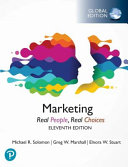(Ebook PDF) Your Health Today Choices in a Changing Society 8th Edition by Michael Teague 1265482853 9781265482855 full chapters
$50.00 Original price was: $50.00.$25.00Current price is: $25.00.
Your Health Today: Choices in a Changing Society 8th Edition by Michael Teague 1265482853 9781265482855 – Ebook PDF Instant Download/DeliveryISBN:
Full download Your Health Today: Choices in a Changing Society 8th Edition after payment.
Product details:
ISBN-10 : 1265482853
ISBN-13 : 9781265482855
Author: Michael Teague
Your Health Today teaches personal health from a perspective of social responsibility. While each of us has a unique set of individual characteristics that shape our health, environmental factors have an impact on our well-being, too. Your Health Today incorporates the individual, interpersonal, and broader social factors that affect our health, acting as a guide for healthy living in college and beyond. The student-focused features in the ninth edition highlight current topics, illustrate concepts with new photos and graphs, and invite dialogue among personal health students. These features serve as entry points to classroom discussion, critical thought, and practical application of health concepts to students’ lives.
Your Health Today: Choices in a Changing Society 8th Table of contents:
Chapter 1: Self, Family, and Community
Introduction
Your Health in Context
Health and Well-Being
What Determines Health?
Population Health
Health Equity
Your Health and Your Community’s Health
Public Health
Community Health
The Healthy People Initiative
Individual Choice vs. Societal Responsibility
Your Personal Health Choices
Health-Related Behavior Choices
The Health Belief Model
The Stages of Change Model
Creating a Behavior Change Plan
Being an Informed Consumer of Health Information
Your Health and Your Family Health History
DNA and Genes: The Basis of Heredity
Genetic Inheritance
Creating a Family Health Tree
What Can You Learn from Your Health Tree?
Looking Ahead
In Review
Personal Health Portfolio
Chapter 1 Physical and Mental Health Assessment
Personal Health Portfolio
Chapter 1 Behavior Change Contract
Personal Health Portfolio
Chapter 1 Creating a Family Health Tree
Chapter 2: Mental Health and Stress
Introduction
What Is Mental Health?
Positive Psychology and Character Strengths
Characteristics of Mentally Healthy People
The Self-Actualized Person
Optimism, Self-Efficacy, and Resilience
Happiness and Positive Psychology
Emotional Intelligence
The Grieving Process: Part of Life
Bereavement and Healthy Grieving
Facing Death
The Brain’s Role in Mental Health and Illness
The Developing Brain
Mental Illness and the Brain
Mental Disorders and Treatment
Neurodevelopmental Disorders
Mood Disorders
Anxiety Disorders
Addiction
Schizophrenia and Other Psychotic Disorders
Mental Disorders and Suicide
Self-Injury
Treatments for Mental Disorders
What Is Stress?
The Stress Response
The Relaxation Response
Acute Stress and Chronic Stress
Stress and Your Health
The General Adaptation Syndrome
Physical Effects of Chronic Stress
Mediators of the Stress Response
Sources of Stress
Life Events
Daily Hassles
Managing Stress
Healthy and Unhealthy Ways to Manage Stress
Stress Reduction Strategies
Relaxation Techniques
Web-Based Mobile Health and Virtual Reality Interventions
In Review
Personal Health Portfolio
Chapter 2 How Resilient Are You?
Chapter 3: Social Connections
Introduction
Healthy Personal Relationships
A Healthy Sense of Self
Friendships and Other Kinds of Relationships
Strengths of Successful Partnerships
Looking for a Partner
Attraction
The Process of Finding a Partner: Dating and More
What Is Love?
The Course of Love
Sternberg’s Triangular Theory of Love
Communication Skills and Styles
Nonverbal Behavior and Metamessages
Building Communication Skills
Gender Differences in Communication Styles
Sex and Gender
Gender Roles and Gender Identities
Sexual Orientation
Committed Relationships
Marriage
Gay and Lesbian Partnerships
Cohabitation
Divorce
Blended Families
Singlehood
Keeping Your Relationships Strong and Vital
Connecting with your Community
Community Starts Within
Finding a Community That Works for You
In Review
Personal Health Portfolio
Chapter 3 Meaning in Life Questionnaire
Chapter 4: Sleep
Introduction
Sleep and Your Health
Health Effects of Sleep
Sleep and Your Thyroid
Sleep and Menstruation
Health Effects of Sleep Deprivation
What Makes You Sleep?
The Structure of Sleep
NREM Sleep
REM Sleep
Sleep Cycles
Sleep Disorders
Insomnia
Evaluating Your Sleep
Getting a Good Night’s Sleep
Take a Break from Technology
Establish Good Sleep Habits
Sleeping in Unfamiliar Environments
Using Sleep Aids and Sleep Apps
In Review
Personal Health Portfolio
Chapter 4 Assessing Your Sleep
Chapter 5: Nutrition
Introduction
Understanding Nutritional Guidelines
Types of Nutrients
Water—The Unappreciated Nutrient
Carbohydrates—Your Body’s Fuel
Protein—Nutritional Muscle
Fats—A Necessary Nutrient
Minerals—A Need for Balance
Vitamins—Small But Potent Nutrients
Other Substances in Food: Phytochemicals
Planning a Healthy Diet
Dietary Guidelines for Americans, 2020–2025
Choose MyPlate
The DASH Eating Plan
Limiting Red Meats
Cultured Meat
Vegetarian Diets
Processed Foods
Traffic-Light System
Getting Help from Food Labels
The Nutrition Facts Label
Restaurant Menu Labels
“Sell By” Labels
Current Consumer Concerns
Overconsumption of Soft Drinks
Overconsumption of Salt
Food Allergies and Food Intolerances
Celiac Disease and Gluten
Non-Celiac Gluten Sensitivity
Energy Bars and Energy Drinks
Fast Foods
Microwaving Food
Freezer-Burned Food
COVID-19 and Food
Food Deserts
Food Insecurity on the College Campus
Food Safety and Technology
Organic Foods
Foodborne Illnesses
Genetically Modified Foods
The Future of Food
In Review
Personal Health Portfolio
Chapter 5 Assessing Your Diet
Chapter 6: Fitness
Introduction
What Is Fitness?
Benefits of Physical Activity and Exercise
General Guidelines for Physical Activity
Components of Health-Related Fitness
Cardiorespiratory Fitness
Muscular Fitness
Flexibility
Neuromotor Fitness
Balance
Conscious Movement
Body Composition
Combining Fitness Activities
Falling Out of Shape
Improving Your Health Through Moderate Physical Activity
Making Daily Activities More Active
Walking for Fitness
Exergaming and Other Replacements for Sedentary Technology
Keeping Track with Fitness Apps
Special Considerations in Exercise and Physical Activity
Health and Safety Precautions
The Exercise-Recovery Industry
Return to Exercise After Being Sick
Face Masks and Exercise During COVID-19
Exercise for People with Disabilities
Physical Activity for Life
Making a Commitment to Change
Using Social and Community Support
In Review
Personal Health Portfolio
Chapter 6 Assess Your Physical Activity
Chapter 7: Body Weight and Body Composition
Introduction
What Is a Healthy Body Weight?
Body Mass Index
Body Composition
Body Fat Distribution
Issues Related to Obesity
The Problem of Underweight
What Factors Influence Your Weight and Body Composition?
Genetic and Hormonal Influences
Age and Gender
Obesogenic Environments and Lifestyle
The Key to Healthy Body Composition: Energy Balance
Estimating Your Daily Energy Requirements
Adjusting Your Caloric Intake
Are there Quick Fixes for a Healthy Body Composition and Healthy Weight?
Weight Loss Diets
Weight Management Organizations
The Medical Approach
The Size-Acceptance Movement
Achieving a Healthy Body Composition for Life
Tasks for Individuals
Tasks for Society
In Review
Personal Health Portfolio
Chapter 7 What Are Your Daily Energy Needs?
Chapter 8: Body Image
Introduction
What Shapes Body Image?
Positive Body Image
Gender and Body Image
Race, Ethnicity, Sexuality, and Body Image
Life Stages and Body Image
Disordered Eating and Eating Disorders
Contributing Factors
Diagnosing Eating Disorders
Health Effects of Eating Disorders
Treating Disordered Eating and Eating Disorders
Body Dysmorphic Disorder
Muscle Dysmorphia
Cosmetic Surgery
Body Art
Exercise Disorders
Promoting a Healthy Body Image and Healthy Eating
Individual Attitudes and Actions
College Initiatives
Public Health Approaches
In Review
Personal Health Portfolio
Chapter 8 Self-Esteem and Body Image
Chapter 9: Alcohol and Tobacco
Introduction
Understanding Alcohol Use
Patterns of Alcohol Use
Everclear
Who Drinks?
COVID-19 Quarantine and Alcohol
Drinking on the College Campus
Effects of Alcohol on the Body
Alcohol Absorption
Alcohol Metabolism
Visible Effects: Weight and Wrinkles
Acute Alcohol Intoxication
Blackouts
Effects of Alcohol Ingestion Fads
Hangovers
What Happens in the Body When You Stop Drinking Alcohol
Health Risks of Alcohol Use
Medical Problems Associated with Alcohol Use
Social Problems Associated with Alcohol Use
Alcohol Misuse, Abuse, and Dependence
Another View: Possible Health Benefits
Treatment Options
Brief Interventions
Inpatient and Outpatient Treatment
Self-Help Programs
Harm Reduction: Approach, Policies, and Laws
Fake IDs
Taking Action
Are You at Risk?
Developing a Behavior Change Plan
Be an Advocate
Understanding Tobacco Use
Who Smokes? Patterns of Tobacco Use
Tobacco Products and E-cigarettes
Why Do People Smoke?
Nicotine Addiction
Behavioral Dependence
Weight Control
Tobacco Marketing and Advertising
Effects of Tobacco Use on Health
Short-Term Effects
Long-Term Effects
Special Health Risks for Women
Special Health Risks for Men
Special Health Risks for Ethnic Minority Groups
Benefits of Quitting
Effects of Environmental Tobacco Smoke
Quitting and Treatment Options
Treatment Programs to Quit Smoking
Medications to Quit Smoking
Quitting on Your Own: Developing a Behavior Change Plan
Confronting the Tobacco Challenge
Limiting Access to Tobacco
FDA Regulation of Tobacco
Public Health Warnings
Tobacco-Free College Campuses
In Review
Personal Health Portfolio
Chapter 9 Assessing Your Drinking
Chapter 10: Drugs
Introduction
Who Uses? Patterns of Illicit Drug Use
What Is a Drug?
Types of Drugs
Drug Misuse and Abuse
Effects of Drugs on the Body
Routes of Administration
Factors Influencing the Effects of Drugs
Effects of Drugs on the Brain
Drugs of Abuse
Central Nervous System Stimulants
Central Nervous System Depressants
Opioids
Hallucinogens and Dissociative Drugs
Inhalants
Cannabinoids
Additional Drugs of Abuse
Approaches to the Drug Problem
Supply-Reduction Strategies
Demand-Reduction Strategies
Harm-Reduction Strategies
In Review
Personal Health Portfolio
Chapter 10 Assessing Your Drug Use
Chapter 11: Sexual Health
Introduction
Sexual Anatomy and Functioning
Female Sex Organs and Reproductive Anatomy
Male Sex Organs and Reproductive Anatomy
Sexual Response
Sexual Development and Health Across the Lifespan
Sexuality and Disability
Varieties of Sexual Behavior and Expression
Common Forms of Sexual Expression
Atypical Sexual Behaviors and Paraphilias
Sexual Dysfunctions
Female Sexual Dysfunctions
Male Sexual Dysfunctions
Protecting Your Sexual Health
Using Condoms
A New Generation of Condoms
Condom Accessibility on College Campuses
Communicating About Sex
Sex and Culture: Issues for the 21st Century
Hooking Up
Dating Apps
Stealthing: Is It a Criminal Act?
Sexting
Internet Pornography
Revenge Porn
Misuse of Erectile Dysfunction Drugs by Young Men
Sex During the COVID-19 Pandemic
Aphrodisiacs
The Future of Sex
In Review
Personal Health Portfolio
Chapter 11 Are You a Good Communicator?*
Chapter 12: Reproductive Choices
Introduction
Choosing a Contraceptive Method
Communicating About Contraception
Which Contraceptive Method Is Right for You?
Abstinence
Long-Acting Reversible Contraceptive Methods
Hormonal Contraceptive Methods
Barrier Methods
Fertility Awareness–Based Methods
Withdrawal
Emergency Contraception
Permanent Contraception
Unintended Pregnancy
Signs of Pregnancy
Deciding to Become a Parent
Adoption
Elective Abortion
Fertility Care
Pregnancy and Prenatal Care
Pregnancy Planning
Prepregnancy Counseling
Nutrition and Exercise
Infection and Pregnancy
Chronic Health Conditions
Prenatal Care and Delivery Choices
Fetal Development
Diagnosing Problems in a Fetus
Childbirth and the Postpartum Period
Labor and Delivery
Newborn Screening
The Postpartum Period
In Review
Personal Health Portfolio
Chapter 12 Which Contraceptive Method Is Right for You?
Chapter 13: Infectious Diseases
Introduction
The Process of Infection
The Chain of Infection
Pathogens
The Body’s Defenses
External Barriers
The Immune System
Risk Factors for Infection
Disruption of Immunity
Changing Patterns in Infectious Disease
Airborne Droplet Transmission
Food-Related Pathogen Transmission
Behavior-Related Pathogen Transmission
Antibiotic Resistance
Vaccination Controversies
Infectious Diseases Worldwide and on Campus
Global Infectious Diseases
Infectious Diseases on Campus
Sexually Transmitted Infections
HIV/AIDS
Bacterial STIs
Viral STIs
Other STIs
Prevention of Infectious Diseases
In Review
Personal Health Portfolio
Chapter 13 Evaluate Your Infectious Disease Risk
Chapter 14: Cardiovascular Disease, Diabetes, Chronic Lung Diseases, and Dementia
Introduction
Cardiovascular Disease
The Cardiovascular System
Atherosclerosis
Coronary Heart Disease and Heart Attack
Stroke
Congestive Heart Failure
Other Cardiovascular Diseases
Promoting Cardiovascular Health
Life’s Simple 7
Other Contributing Factors in Cardiovascular Health
Areas of Interest for Future CVD Research
Testing and Treatment
Diabetes
Type 1 Diabetes
Type 2 Diabetes
Gestational Diabetes
Chronic Lung Diseases
The Respiratory System
Asthma
Chronic Obstructive Pulmonary Disease
Dementia
Forms of Dementia
Risk Factors, Diagnosis, and Treatment
Preventing Chronic Diseases
In Review
Personal Health Portfolio
Chapter 14 How “Heart Healthy” Are You?
Chapter 15: Cancer
Introduction
What Is Cancer?
Healthy Cell Growth
Cancer Cell Growth
Classifying Cancers
Types of Cancer
Risk Factors for Cancer
Family History
Lifestyle Factors
Social and Economic Factors
Environmental Factors
Cancer Screening
Cancer Treatments
Surgery
Chemotherapy
Radiation
Biological Therapies
Stem Cell Transplantation
Gene Therapy and Genetic Testing
Clinical Trials
Complementary and Integrative Medicine
Common Cancers
Breast Cancer
Prostate Cancer
Lung Cancer
Colon and Rectal Cancer
Skin Cancers
Lymphoma
Common Cancers in Young Adults
Living with Cancer
In Review
Personal Health Portfolio
Chapter 15 Assessing Your Risk Factors for Cancer
Chapter 16: Injury and Violence
Introduction
Injury: Creating Safe Environments
Motor Vehicle Safety
Motorcycle Safety
Bicycle Safety
E-scooter Safety
Pedestrian Safety
Recreational Safety
Home Safety
Children and Vehicular Heatstroke
Excessive Noise
Providing Emergency Aid
Computer Use
Natural Disasters
Violence: Working Toward Prevention
Shootings on the College Campus
Hazing
Hate Speech
Sexual Violence
Intimate Partner Violence
Hate Crimes and Terrorism
Preventing Violence
In Review
Personal Health Portfolio
Chapter 16 How Safe Are You?
Chapter 17: Complementary and Integrative Medicine
Introduction
Approaches to Health Care
Conventional Medicine
Complementary and Integrative Medicine
Natural Products
Megavitamins
Minerals
Probiotics and Other Nonvitamin, Nonmineral Supplements
Herbal Medicines
Mind and Body Practices
Mind-Body Therapies
Manipulative Therapies
Energy Therapies
Alternative Medical Systems
Traditional Chinese Medicine
Ayurveda
Homeopathy
Naturopathy
Indigenous Medicine
Making Informed Health Care Choices
Evaluating Choices
Choosing Self-Care
Influences on Health Care Choices
Supporting Integrative Medicine
In Review
Personal Health Portfolio
Chapter 17 Understanding Your Insurance Coverage
Chapter 18: Environmental Issues
Introduction
Water and Water Quality
Water Supplies and Shortages
Virtual Water
Water Pollution
Drinking Water
Conserving Water
Climate Change
Earth’s Atmosphere
Air Pollution
Indoor Air Pollution
Waste Management
Solid Waste
E-Waste
Hazardous Waste
Approaches to Waste Management: Recycling and More
Ecosystems and Biodiversity
Deforestation
Desertification
Loss of Freshwater Resources
Ocean Acidification
Coral Reefs
Protecting Ecosystems
Energy Resources
Corporate Average Fuel Economy
Crude Oil
Coal
People also search for Your Health Today: Choices in a Changing Society 8th:
your health today choices in a changing society 9th edition
borrow your health today choices in a changing society
your health today choices in a changing society 7th edition
your health today choices in a changing society free
how does change affect society
Tags:
Health,Choices,Changing Society,Michael Teague
You may also like…
Social Science
Uncategorized
Business & Economics - Economics
Politics & Philosophy - Social Sciences
Marriages, Families, and Relationships: Making Choices in a Diverse Society 13th Edition
Uncategorized
Child Psychology: Development in a Changing Society, 5th Edition 5th Edition, (Ebook PDF)
Business & Economics - Sales & Marketing
Marketing: Real People, Real Choices, Global Edition 11th Edition
Politics & Philosophy - Sociology
Choices: Interviewing and Counselling Skills for Canadians 8th Edition












